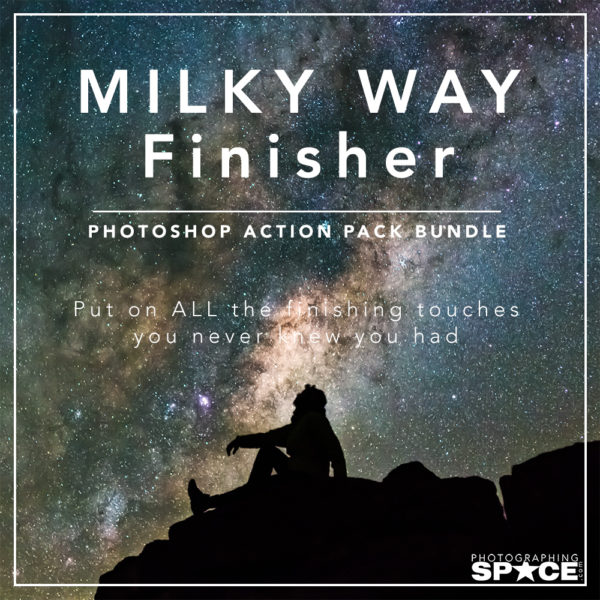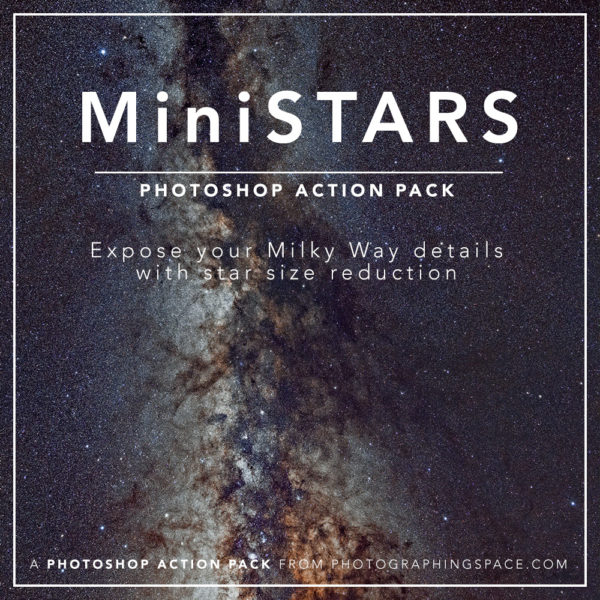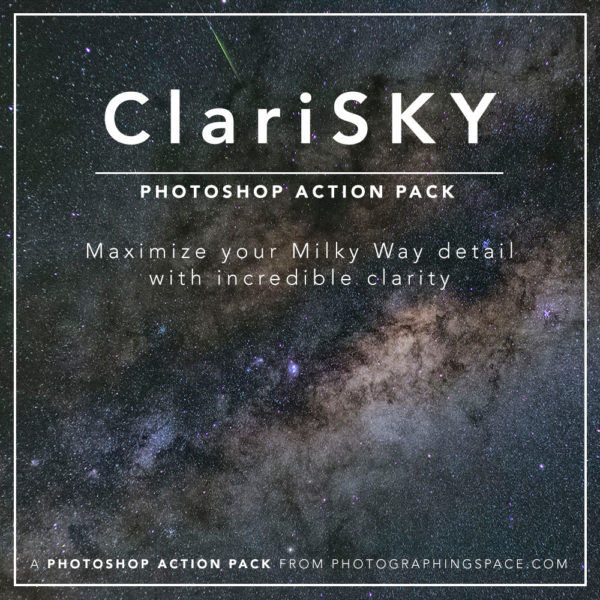Start to finish: The EXACT camera settings and imaging setup I used during the 2018 total lunar eclipse
Everybody’s always asking “what camera settings did you use?”…and here’s the answer. It’s almost always the same, except when it’s not. And, for the record, camera settings are only about 10% of the equation, so let this sentence be my tiny effort to help dispel that myth.
This is an exhaustive list of every camera setting I used during the 2018 July total Lunar Eclipse, shot (and live streamed) in Johannesburg, South Africa.
Gear setup and notes
- Officina Stellare Hiper APO, 105mm refractor telescope, f/6.2, 650mm focal length
- 2.5x Powermate (tele-extender / Barlow / etc.)
- Canon 5D Mark III, tethered to a MacBook with the Canon utility
- Celestron AdvancedVX German Equatorial tracking mount
Using a 2.5x Powermate effectively multiplies the focal length, and also the focal ratio, by 2.5. So, the focal ratio becomes approximately f/15.5 and the focal length is 1625mm.
Camera settings and timing
Note that this is not an exhaustive list of every exposure (600 of them…!). Rather, it is a list of the exposure and ISO settings at the exact times when I changed them.
As the eclipse phases progress, note how quickly I had to change the exposure and ISO. Also, remember that doubling the ISO means you can double the double speed to get the same exposure level — e.g.: 2 seconds at ISO 100 is the same as 1 second at ISO 200. Use this fact to your advantage as things move quickly, and keep the ISO to the lowest you can without an excessively long shutter speed.
 |
Time: 19:10:59 1/125 sec, ISO 100 Still low enough in the sky for white balance and brightness to be affected due to the atmosphere. |
 |
Time: 19:31:56 1/125 sec, ISO 100 High enough now after just 20 minutes for the atmosphere to have less effect. |
 |
Time: 19:58:57 1/125 sec, ISO 100 Eclipse has started. |
 |
Time: 20:33:17 1/125 sec, ISO 100 Still no change in exposure time needed. |
 |
Time: 20:51:04 1/100 sec, ISO 100 It starts here, the first of many required changes of exposure. This is when you know you have to really start paying attention and be ready, watching the histogram and trusting your eyes. |
 |
Time: 20:59:16 1/80 sec, ISO 100 Another change after 8 minutes. |
 |
Time: 21:02:43 1/60 sec, ISO 100 Another change after less than 3 minutes. |
 |
Time: 21:06:54 1/50 sec, ISO 100 Did I wait too long for this change? Maybe. |
 |
Time: 21:11:17 1/40 sec, ISO 100 |
 |
Time: 21:13:26 1/30 sec, ISO 100 |
 |
Time: 21:15:02 1/25 sec, ISO 100 A few minutes have gone by, with a few changes, and notice the more exposure you give it, the less change in the eclipsed moon you will see. |
 |
Time: 21:18:34 1/20 sec, ISO 100 The last bit of reflected sunlight is starting to really become noticeable. Get ready for quick changes soon. |
 |
Time: 21:19:37 1/15 sec, ISO 100 Down to one minute between changes now. Wait for the next one. Things are heating up quickly! It’s going to get fast, soon. |
 |
Time: 21:21:40 1/20 sec, ISO 200 The first ISO change! |
 |
Time: 21:22:12 1/15 sec, ISO 200 |
 |
Time: 21:23:30 1/10 sec, ISO 200 |
 |
Time: 21:25:06 1/10 sec, ISO 400 Another ISO change, and the red color is starting! (it’s been there for a while if you wanted to overexpose…) |
 |
Time: 21:27:13 1/8 sec, ISO 400 This is my favorite part…the end of the light, those last bits. |
 |
Time: 21:27:54 1/8 sec, ISO 800 Exposure doubled because of the ISO now. Look at that color coming! The rainbow effect is here. |
 |
Time: 21:28:56 1/6 sec, ISO 800 |
 |
Time: 21:29:03 1/5 sec, ISO 800 You’re reading that right, only a few seconds in between exposure changes! Start introducing the color and the last sliver of light. Fast and furious for a while now. |
 |
Time: 21:30:20 1/4 sec, ISO 800 And that’s it, we’re now just catching the end of the sun and the moon is nearly in the shadow of the earth. |
 |
Time: 21:30:36 0.3 sec, ISO 800 Just seconds between changes now, as fast as you can manage! |
 |
Time: 21:30:55 0.4 sec, ISO 800 |
 |
Time: 21:31:15 0.5 sec, ISO 800 |
 |
Time: 21:32:22 0.6 sec, ISO 800 Direct reflection from the sunlight is now pretty much gone so we can quickly increase the exposure without blowing out the brighter parts |
 |
Time: 21:32:41 1.0 sec, ISO 800 |
 |
Time: 21:32:59 1.3 sec, ISO 800 We can really start to bring out the red color in the refracted light that is still hitting the moon. |
 |
Time: 21:33:18 1.6 sec, ISO 800 |
 |
Time: 21:38:55 0.8 sec, ISO 1600 From the last exposure to here, it took a while (5 minutes), that last bit of refracted “blue-white-ish” light is pretty much gone now. |
 |
Time: 21:43:14 1.0 sec, ISO 1600 Things are definitely moving much slower now, small changes over a few minutes is what we’re going for as the deep-red of the center of the shadow slowly passes over the moon. |
 |
Time: 21:47:44 1.3 sec, ISO 1600 What’s that? STARS! Stars the moon are starting to show up now. |
 |
Time: 21:55:21 1.6 sec, ISO 1600 |
 |
Time: 22:00:28 0.8 sec, ISO 3200 Maximum ISO achieved. We won’t push the ISO gain farther than this with the 5DMkIII, so from here on out we will only adjust shutter speed to increase exposure. |
 |
Time: 22:02:06 1.0 sec, ISO 3200 |
 |
Time: 22:07:52 1.3 sec, ISO 3200 |
 |
Time: 22:15:59 1.6 sec, ISO 3200 |
 |
Time: 22:19:59 2.0 sec, ISO 3200 |
 |
Time: 22:29:53 2.5 sec, ISO 3200 As the maximum eclipse approaches, so does our maximum exposure time. Almost there. This was a long eclipse, so there was a lot of time in this phase range. |
 |
Time: 22:31:10 3.2 sec, ISO 3200 MAXIMUM EXPOSURE ACHIEVED! Well, for what I did. You can even push it longer, get more stars, and I highly recommend that, even if just to test and see. During this slower and longer phase when it’s not transitioning quickly, you have time to play. |
 |
Time: 22:49:41 2.5 sec, ISO 3200 |
 |
Time: 22:53:40 2.0 sec, ISO 3200 Twenty minutes later and we’re nearing too much exposure as the light starts to illuminate the lower limb again. |
 |
Time: 22:57:33 1.6 sec, ISO 3200 |
 |
Time: 23:00:39 1.3 sec, ISO 3200 |
 |
Time: 23:05:14 2.0 sec, ISO 1600 ISO change! Contrast differences between the soon-to-be-illuminated lower-left limb is now making things a little more difficult again. You’ve got to be on your toes again for a while! |
 |
Time: 23:06:56 1.6 sec, ISO 1600 |
 |
Time: 23:08:01 1.3 sec, ISO 1600 |
 |
Time: 23:11:31 1.0 sec, ISO 1600 |
 |
Time: 23:13:09 0.8 sec, ISO 1600 |
 |
Time: 23:13:42 1.3 sec, ISO 800 ISO change again! Only seconds going by now between changes, again. I’m tired but the adrenaline is kicking again. |
 |
Time: 23:13:51 1.0 sec, ISO 800 |
 |
Time: 23:14:00 0.8 sec, ISO 800 |
 |
Time: 23:14:09 0.6 sec, ISO 800 |
 |
Time: 23:14:19 0.4 sec, ISO 800 Oh yeah, I love this part! The sun is peeking! Changes coming FAST now. |
 |
Time: 23:14:28 0.6 sec, ISO 400 Another ISO drop, I don’t want to blow out ANYTHING. |
 |
Time: 23:15:02 0.4 sec, ISO 400 |
 |
Time: 23:15:42 0.3 sec, ISO 400 |
 |
Time: 23:16:41 1/4 sec, ISO 400 Say goodbye to the red…it’s still there if you want to overexpose the sliver of a limb with reflected light, or if you use an extreme curve in post! Remember post. |
 |
Time: 23:16:55 1/5 sec, ISO 400 |
 |
Time: 23:17:19 1/6 sec, ISO 400 |
 |
Time: 23:17:45 1/8 sec, ISO 400 |
 |
Time: 23:20:02 1/10 sec, ISO 400 |
 |
Time: 23:20:51 1/6 sec, ISO 200 ISO down to 200, we’re almost at the lowest ISO we can use. Amazing how that little bit of moon can make so much light. Can you say albedo? Not “libido,” (but that’s obviously fun also). |
 |
Time: 23:22:24 1/8 sec, ISO 200 |
 |
Time: 23:22:40 1/10 sec, ISO 200 |
 |
Time: 23:24:26 1/13 sec, ISO 200 |
 |
Time: 23:26:09 1/15 sec, ISO 200 |
 |
Time: 23:28:33 1/20 sec, ISO 200 |
 |
Time: 23:29:22 1/25 sec, ISO 200 |
 |
Time: 23:31:36 1/13 sec, ISO 100 Back to ISO 100 again, this is it, the home stretch! Exhausting, isn’t it? |
 |
Time: 23:32:43 1/15 sec, ISO 100 |
 |
Time: 23:34:19 1/20 sec, ISO 100 |
 |
Time: 23:35:25 1/25 sec, ISO 100 |
 |
Time: 23:36:40 1/30 sec, ISO 100 |
 |
Time: 23:43:03 1/40 sec, ISO 100 |
 |
Time: 23:45:33 1/50 sec, ISO 100 |
 |
Time: 23:54:09 1/60 sec, ISO 100 |
 |
Time: 23:56:25 1/80 sec, ISO 100 |
 |
Time: 00:09:47 1/100 sec, ISO 100 |
 |
Time: 00:14:19 1/125 sec, ISO 100 Ok, back to the original exposure. BUT WAIT, there’s more! |
 |
Time: 00:28:47 1/160 sec, ISO 100 The moon is WAY higher in the sky than it was at the start of the eclipse, so it’s brighter with less atmosphere for the reflected to go through. So…not quite done. But close. |
 |
Time: 00:38:36 1/200 sec, ISO 100 Aaaaaaand we’re at the final exposure setting. It doesn’t get any brighter than this, folks. The moon is almost out of the shadow of our little planet. |
 |
Time: 01:14:08 1/200 sec, ISO 100 The end. Fine’. Scene. Let’s have some beers backstage! |
Final notes
To be honest, I probably could have stuck with 1/125 sec exposures at the end, like the beginning, but sometimes I can’t leave well enough alone. Also, slightly underexposing the moon can often yield superior results.
Both shooting and live streaming this at the same time, but also making this post was a lot of work, but honestly the adrenaline kept me going. Yes, adrenaline is a thing during astrophotography super-events like this. During the key phase changes when the last of the reflected sunlight is visible, or the first bit comes back, things move FAST! I could almost not keep up. It was insane, and awesome. Don’t drink too much, because you might have a chance to pee. 😉
Your kilometerage may vary
Do not forget that your camera settings will be different, but once you find a base, you will need to change as often as I did. Aperture matters, and I was shooting at a whopping f/15.5! That’s slow.
Wow, that was a ride. I hope this helps you in your journey to successfully photograph the entirety of a total lunar eclipse.







Thankyou for the Eclipse walkthrough… its going be a great help on the May26th 2021 total lunar eclipse
I’m surprised that this has not gotten more attention as this is a great article. Well illustrated and settings for everything.
I’m using it for the lunar eclipse of May 15/16 2022
Cory, this is an excellent article. I do have a question. I want to automate the process from start to finish and use a tracker to track the moon from start to finish during this upcoming total lunar eclipse on 3/14/25. If I set the camera to AE, what aperture would you recommend I keep the lens at? f5/5.6? Also, the ISO when done manually, needs to be changed as your article indicated. In AE mode, if the camera controls the shutter speed, what ISO should I keep so that we get every single phase captured with the correct exposure, including the blood red phase of totality. Thanks.